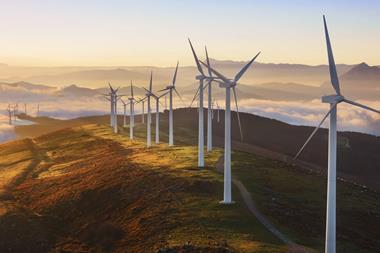Over 90% of global institutional investors actively consider sustainability in their real assets investment decisions, according to new research from Aviva Investors.
According to the assets manager’s annual Real Assets Study, 93% of the 500 institutional investors surveyed, actively consider ESG and sustainability in their real assets investment decisions, with 17% considering it a “critical factor”.
Two-thirds (64%) of the respondents plan to increase their allocations to real assets over the next two years, with 46% planning to do so by up to 10%.
Aviva Investors said the highest allocations are by investors in North America, where almost a quarter have greater than 20% of their portfolio in real assets, compared to 19% of European and 17% of Asia Pacific investors.
“Whilst diversification remains the primary driver for investing in real assets according to 57% of respondents, the ability of these strategies to provide inflation-linked income is increasingly driving allocations.”
The findings reveal 53% of respondents allocate to real assets for its ability to provide inflation-linked income, compared with just 33% three years ago.
With half of the institutional investors having a net-zero commitment in place, the study found 28% of respondents allocate to real assets to capture its positive ESG impacts, compared to just 17% three years ago.
Over the next 12 months, difficulty of finding opportunities (53%), transaction costs, and valuations (both 50%) are considered the greatest barriers to increasing allocations to real assets, the study revealed.
Aviva Investors said respondents also consider greenwashing the biggest material risk (52%) to investment in sustainable real assets, ahead of concerns over valuations (44%). Illiquidity (69%) is the top concern for investing in real assets more generally, whilst valuation risk (57%) is also a big concern, especially for pension funds (61%).
Daniel McHugh, real assets CIO at Aviva Investors, said: “Inflation had an acute impact on the economic and investment landscape in 2022, making it increasingly expensive to hedge against it through traditional asset classes, whilst rising interest rates have eroded returns.
”The ability of real assets to provide inflation-linked income has woken investors up to the attractiveness of these strategies beyond simply being a diversification play. They are now playing a meaningful role in overall portfolios, offering investors a broad menu of options with varying degrees of risk and inflation protection built in.
“The study shows that demand is also being driven by the ability to assess the positive impact of these investments beyond returns, such as contributing to sustainability-related objectives.”
He added that whilst concerns about high valuations feature prominently in this year’s responses, just 22% of institutional investors see climate-related obsolescence as the most material risk.
“Currently, capital pricing models do not adequately capture new factors such as this in their numbers, which carry material risk for investors. That has to change.
”As the market looks at assets through a net-zero lens, even prime assets could become vulnerable. Investors must be alive to how quickly – and to what extent – obsolescence could accelerate and the potential impact it could have on portfolios.”
To read the latest edition of the latest IPE Real Assets magazine click here.
















